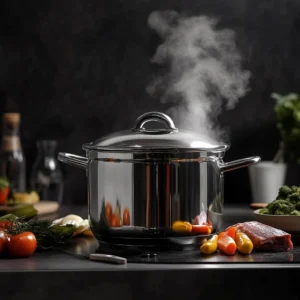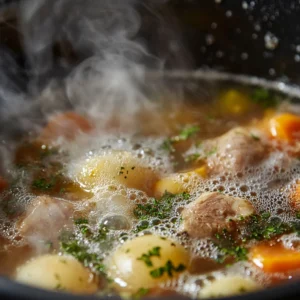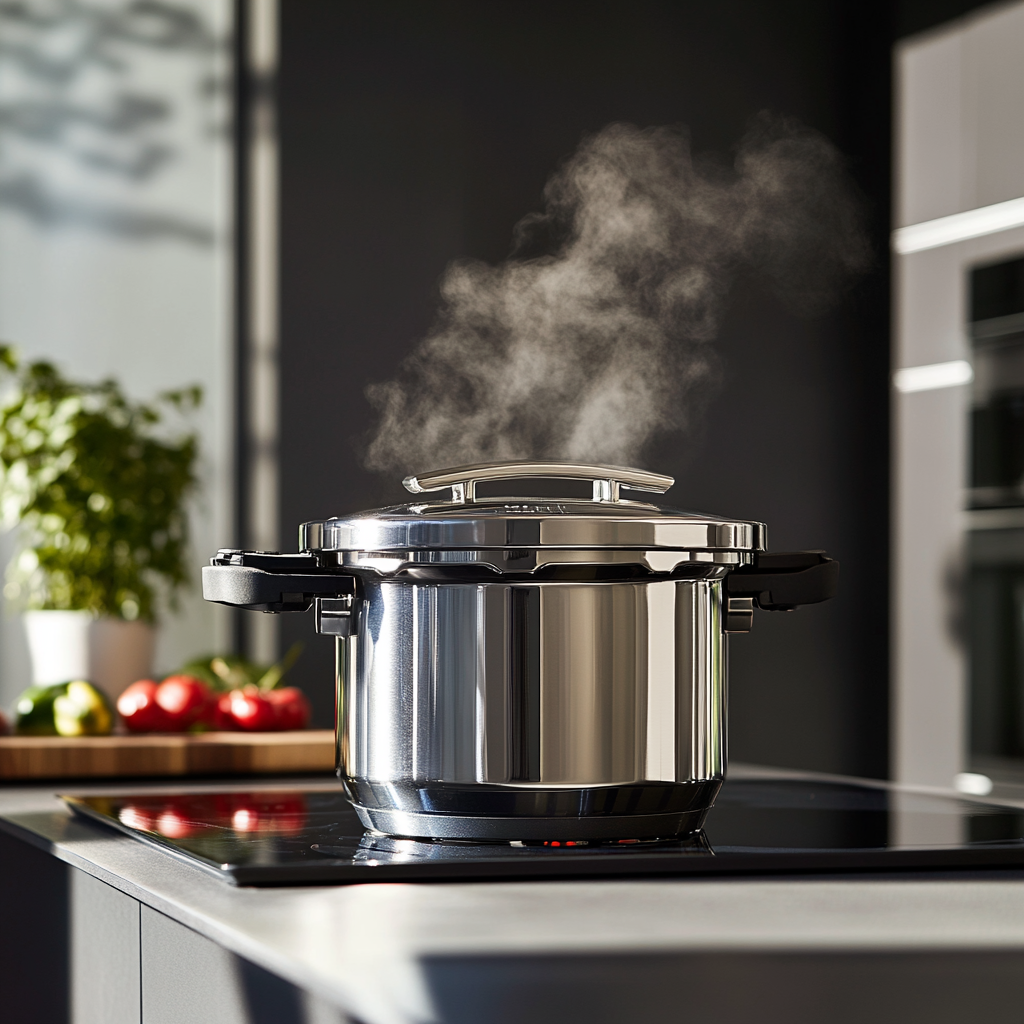A pressure cooker is an invaluable kitchen tool that allows for faster cooking while preserving nutrients and enhancing flavors. Its mechanism relies on trapping steam inside a sealed pot, which increases the internal pressure and raises the boiling point of water.
This process significantly reduces cooking times and ensures that food is cooked evenly. Over the years, pressure cookers have evolved from simple stovetop models to sophisticated electric versions equipped with advanced safety features such as pressure release valves, secure locking mechanisms, and automatic temperature control.
Cooking with a pressure cooker is not just about speed; it is also about efficiency and convenience. Many dishes that traditionally require hours of simmering can be prepared in a fraction of the time, making it an ideal solution for busy households and professional kitchens alike. The ability to cook meals quickly without compromising on taste or texture makes it a must-have appliance. Additionally, pressure cookers allow for more consistent cooking results, ensuring that food is cooked thoroughly and evenly every time.
How a Pressure Cooker Works

For a more in-depth look at how pressure cookers function, check out this guide to pressure cooking.
Understanding how a pressure cooker works is essential to appreciating its benefits. The appliance functions by using pressurized steam to cook food at high temperatures, which not only speeds up the process but also helps in retaining essential vitamins and minerals that might otherwise be lost in conventional boiling or frying. Unlike traditional cooking methods that expose food to prolonged heat, pressure cooking limits the contact time with high temperatures, making it an excellent choice for those who want to maintain the nutritional integrity of their meals.
The principle behind a pressure cooker is simple yet effective. When heat is applied to the sealed pot, the liquid inside turns into steam. Since the steam cannot escape, the pressure builds up, increasing the boiling point of water. This means food cooks faster than it would in an open pot. For example, tough cuts of meat that usually require hours of slow cooking can be ready in under an hour with a pressure cooker. Furthermore, the process helps tenderize food by breaking down connective tissues and fibers, making even the toughest ingredients soft and palatable.
Advantages of Using a Pressure Cooker
One of the most significant advantages of using a pressure cooker is the time-saving aspect. Cooking that usually takes hours, such as slow-braised meats or dried beans, can be done in a fraction of the time. This efficiency translates into energy conservation, as less electricity or gas is required to prepare meals. Moreover, the sealed environment prevents the loss of moisture, which enhances the flavors and textures of dishes. When pressure cooking meats, for instance, the internal moisture remains trapped, making the cuts incredibly tender and juicy. Similarly, vegetables retain their vibrant colors and crispness while preserving more of their natural vitamins.
Another key benefit is the preservation of nutrients. Many vitamins and minerals are lost during conventional boiling, as they leach into the cooking water. With a pressure cooker, the closed environment ensures that most of these essential nutrients remain intact. Studies have shown that pressure cooking preserves more vitamin C and other antioxidants compared to boiling or frying, making it an excellent option for health-conscious individuals.
Furthermore, pressure cooking is more environmentally friendly compared to other cooking methods. The reduced cooking time means less energy is used, which helps decrease overall household energy consumption. Over time, this can contribute to significant savings on utility bills while reducing one’s carbon footprint.
Best Foods to Cook in a Pressure Cooker

For specific recipe ideas and cooking times, visit this pressure cooker recipe collection.
Cooking Meats and Poultry
A pressure cooker is particularly suited for preparing certain types of food. Tough cuts of meat, which typically require long hours of slow cooking to become tender, can be transformed into succulent, flavorful dishes in a fraction of the usual time. This makes the appliance indispensable for recipes that involve brisket, short ribs, or lamb shanks. Poultry, including whole chickens and turkey legs, also benefits from pressure cooking, as it ensures even cooking without drying out the meat. Additionally, it helps infuse flavors deeply into the meat, making marinades more effective.
Ground meats, sausages, and even meatballs can be prepared efficiently using a pressure cooker. The pressurized steam ensures even cooking and enhances the texture of these dishes. Moreover, pressure cooking can be used to make shredded meats for tacos, sandwiches, or meal prep, reducing the cooking time significantly compared to conventional methods.
Preparing Legumes and Grains
Legumes and grains are another category of foods that cook exceptionally well in a pressure cooker. Dried beans, chickpeas, and lentils, which usually require extensive soaking and simmering, can be prepared quickly without compromising texture or taste. Whole grains such as quinoa, barley, and brown rice absorb flavors more effectively under pressure, making them perfect for pilafs and hearty grain bowls. Unlike traditional boiling methods, which can result in unevenly cooked grains, the uniform steam distribution in a pressure cooker ensures that every grain is perfectly tender.
Pressure cooking is particularly useful for meal prepping large batches of grains and legumes. It allows for precise control over cooking times, ensuring that grains remain fluffy and separate rather than mushy. Additionally, the high-pressure environment helps break down anti-nutrients found in some legumes, making them easier to digest. This is particularly beneficial for people with digestive sensitivities who might otherwise struggle to consume these foods.
Cooking Vegetables
Vegetables, particularly root varieties such as potatoes, carrots, and beets, are also ideal for pressure cooking. The rapid steaming process preserves their natural sweetness and prevents nutrient loss. More delicate vegetables, such as broccoli and cauliflower, require careful timing to prevent overcooking, but when done correctly, they maintain their vibrant colors and crisp textures. Even more unusual ingredients, like artichokes or mushrooms, benefit from the pressurized environment, as it helps intensify their natural flavors while reducing cooking time.
Another benefit is that pressure cooking reduces the need for excessive oil or fats. Since the moisture remains locked in, vegetables cook in their natural juices, enhancing their flavor without requiring added butter or oil.
Specialty Uses of a Pressure Cooker
Making Stocks and Broths
Beyond everyday meals, pressure cookers are also useful for specialty applications. If you’re interested in traditional flavors, check out this article on Saffron Recipes: A Guide to Cook. One such use is the preparation of homemade stocks and broths. Traditionally, making a deeply flavorful broth involves simmering bones and vegetables for several hours, but with a pressure cooker, the process can be completed in under an hour. The high pressure extracts gelatin and nutrients from the bones more efficiently, resulting in a richer, more nutrient-dense broth. This is particularly beneficial for those following bone broth diets or looking to create restaurant-quality soups at home.

Cooking Desserts
Desserts are another area where pressure cookers shine. Cheesecakes, puddings, and flans turn out exceptionally smooth and creamy due to the moist cooking environment. Steamed desserts, such as sponge cakes and rice pudding, benefit from the consistent heat distribution, preventing the risk of burning or overcooking. In addition, fruit preserves and jams can be made efficiently under pressure, allowing fruits to retain their natural sweetness and vibrant color without excessive added sugar.
Sterilizing Jars and Utensils
Another lesser-known but highly practical use of a pressure cooker is for sterilizing jars and utensils. Home canning enthusiasts often rely on this method to ensure that their jars are free of bacteria before storing preserves and pickles. The high temperature achieved in a pressure cooker effectively kills harmful microorganisms, making it a valuable tool for food preservation. Additionally, baby bottles and kitchen tools can also be sterilized in this manner, offering a convenient alternative to boiling water methods.
Conclusion
A pressure cooker is a powerful and versatile tool in any kitchen. From saving time and energy to preserving nutrients and enhancing flavors, it provides numerous benefits that make cooking easier and more efficient. Whether you’re preparing meats, grains, or vegetables, or even making desserts and broths, a pressure cooker allows for endless culinary possibilities. Investing time in mastering its techniques will allow you to enjoy healthier, more flavorful meals with minimal effort.
Beyond its functional advantages, a pressure cooker is also an eco-friendly cooking method. By significantly reducing cooking time, it minimizes energy consumption, contributing to lower electricity and gas bills while reducing the environmental footprint. This aspect is particularly important in today’s world, where sustainable practices are gaining increasing importance. By choosing a pressure cooker over traditional cooking methods, home cooks can do their part in conserving energy while still enjoying delicious, well-prepared meals.
Another major advantage is the convenience factor. Proper kitchen skills, such as maintaining sharp knives, also contribute to efficient meal prep. Learn more in How to Sharpen a Knife: A Comprehensive Guide. For individuals with busy lifestyles, meal preparation can often become a time-consuming task. The pressure cooker simplifies the process by allowing multiple ingredients to be cooked simultaneously, eliminating the need for constant supervision. Additionally, its ability to produce tender meats, perfectly cooked grains, and flavorful broths in a fraction of the usual cooking time makes it an invaluable tool for meal planning and batch cooking. This allows home cooks to prepare nutritious meals ahead of time, reducing the reliance on processed and unhealthy fast foods.
Culinary creativity also flourishes with a pressure cooker. Many chefs and home cooks alike experiment with different recipes, from international dishes like Indian curries and Mexican stews to unique desserts such as caramel flan and moist chocolate cakes. The ability to explore a variety of flavors, textures, and cooking techniques within a single appliance makes it a valuable asset in any kitchen. Additionally, the uniform heat distribution ensures consistent results, eliminating common issues such as overcooking or uneven textures.
Ultimately, incorporating a pressure cooker into your daily routine can revolutionize the way you cook. It offers an efficient, nutritious, and flavorful approach to meal preparation, suitable for a wide range of cuisines and dietary needs. Whether you’re a beginner looking to simplify your cooking or an experienced chef exploring new techniques, the pressure cooker remains one of the most practical and beneficial tools available. With the right knowledge and a bit of practice, anyone can master its use and elevate their culinary skills to new heights.

